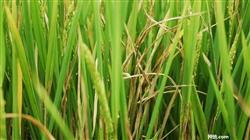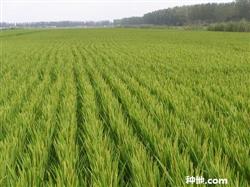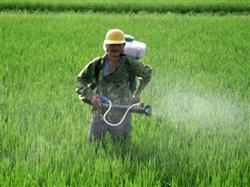Why do rice leaves turn yellow?

Why do rice leaves turn yellow? Please introduce that yellowing of rice leaves is a common phenomenon. The main symptoms are as follows, which should be carefully identified and prevented. 1. Toxic yellowing ① hydrogen sulfide poisoning. The root system is black and smells of rotten eggs, and the white roots are few and thin; the old leaves at the base are yellowish brown, the tips of the leaves are yellow, and then the old leaves die, and there are only one or two green new leaves in the upper part. ② organic acidosis. The rice plant root system shrinks, rarely produces new roots, the root epidermis of the plant falls off, the leaf color is yellow, or shrinks, and in serious cases, the lower leaves wither and die. All toxic yellowing rice fields should be drained and dried immediately to improve soil permeability, increase oxygen and detoxification. Combined with mid-tillage, quick-acting fertilizers of nitrogen, phosphorus and potassium were applied to improve the nutritional conditions of rice plants. In rice fields with too much organic acid, soil modifiers, such as quicklime, can be applied to neutralize acidity and eliminate harmful substances. 2. Deficiency yellowing ① yellowing due to anoxia. It mainly yellowed from the tip of the old leaf, then gradually extended from the stem and leaf to the heart leaf, and finally developed to the yellowish green of the whole plant. When it is serious, it withered and yellowed inward from the leaf tip and leaf edge, and the seedling grew slowly. From afar, the seedling was yellow. When this symptom occurs, urea, ammonium bicarbonate and other available nitrogen fertilizers should be applied in time. ② yellowed due to potassium deficiency. It mainly occurs in high-yield paddy fields with large amounts of nitrogen and phosphorus application. In the initial stage, it showed slow growth, short plant shape, few tillers, straight leaves and tufted top leaves. The new leaves are dark green and dull, and the tips of the lower old leaves are yellow at first, with reddish brown spots of different sizes, then spread to the base along the leaf veins, and finally the whole leaves become reddish brown, some even withered, as if scorched by fire from afar, this is a typical potassium deficiency bacterial blight. The occurrence of this symptom should be drained immediately, gap irrigation should be used, and potassium fertilizer should be applied in time (such as potassium chloride, plant ash, etc.). ③ is yellowing due to zinc deficiency. It mainly occurs in cold soaking fields in mountainous areas, and the peak of the disease occurs about 20 days after transplanting. The leaf basal midrib first yellowed, then showed yellow-red or reddish-brown spots, the leaf narrowed, the leaf vein was brittle and easy to break, the leaf aging was fast, the new leaf grew slowly and the leaf was thin and narrow, and the base and midrib became green and brown. Can be remedied with fertilizers such as zinc sulfate, such as 0.1% zinc sulfate for multiple foliar spraying, the effect is very good. 3. Fertilizer damage or drug damage will cause yellowing of ammonia, ammonium bicarbonate and other fertilizers and pesticides if not applied properly, which will cause poisoning and yellowing, resulting in pieces of rice leaves turning bright yellow or golden yellow, sometimes with scorched spots on the yellow leaves. When the drug damage is serious, the leaves appear spots, green loss, anxiety or withering, or yellowing, and some even die of the whole plant. If found in time, deep water can be irrigated immediately in the field, or clear water can be sprayed on rice plants to reduce the degree of drug damage. In addition, quick-acting fertilizers such as urea should be applied after fertilizer or drug damage to enhance crop growth and resistance. 4. Yellowing ① bacterial blight caused by disease infection caused yellow leaves. Generally, it is first shown on the tip or edge of the leaf, which first produces yellowish green or dark green spots, and then expands into strips along the vein, showing grayish white, with a clear boundary between the disease and the healthy part, and there is often yellowish-brown "bacterial pus" on the spot. ② bacterial leaf streak caused yellow leaves. The heart leaf is yellow-brown and dead like a false withered heart seedling, there are brown stripes on the leaf and leaf sheath, and yellow "bacterial pus" can be seen after the midvein is broken on the disease spot. When infected in the later stage, the top of the leaf is withered and yellow from the top to more than half of the leaf, and it is fiery red from afar. ③ rice bacterial base rot causes yellow leaves. The heart leaves wither and curl, and some have turned yellow and withered, like the withered seedlings caused by Chilo suppressalis and Chilo suppressalis, but the base of the stem is often black, the stem nodes become hard and brittle, easy to break and have a rotten smell. On the other hand, the yellow leaves caused by white leaf blight, bacterial leaf streak and bacterial base rot are all caused by bacterial diseases, such as timely control of carbendazim, Ye Qingshuang and other pesticides, and drying the fields at the right time to improve soil permeability and enhance the resistance of rice itself. Applying fertilizer once after the disease is under control is helpful to control the spread. 5. Physiological premature senility yellow leaves spread from the bottom up, most of the diseased leaves were orange, with a certain metallic luster, occurred in a piece or the whole field, and there were no disease spots and bacterial pus on the yellow leaves. Physiological premature senescence yellow leaf is a physiological yellow leaf phenomenon caused by the decline of root activity or dehydration and desiccation in the later stage of rice growth, some of which have something to do with varieties. The prevention and control methods are to select rice varieties resistant to premature senescence, to prevent the paddy field from being cut off too early in the later stage, and to maintain moist irrigation. Click to get massive rice planting technology click to get massive grain planting technology
- Prev

How to cultivate Rice well
How to cultivate rice? Please guide if you want to grow rice well, you can refer to the following methods: first, field selection. Choose a blank field with unobstructed drainage and no leakage. Second, broadcast at the right time. The sowing date is late April, and the hybrid rice is sown 1 kg per mu. 80% of the seeds are sown when their breasts are broken and white, which is required to be evenly sown. The valley collapsed after sowing.
- Next

What should be paid attention to in foliar fertilization of rice?
What should be paid attention to in foliar fertilization of rice? Please guide foliar fertilization has the advantages of low dosage, strong pertinence, fast absorption, obvious effect, low cost and so on. At present, it is the vegetative growth period of rice, how to promote the rapid growth of rice roots, stems, leaves and tillers, the author reminds the broad masses of farmers that they should apply foliar fertilizer to rice.
Related
- The first cup of black tea in spring, the flavor and history of tea gardens in Kenya, Africa
- The computer can not only choose potatoes, but also grow tea rice. AI will grow winter oolong tea champion.
- It is not only the inflated tea bitten by insects, but also engraved with the four seasons tea in Beipu.
- The Oriental Beauty Tea Festival in Zhuxian County takes the stage at the weekend to experience the plus-size feast of oil tea.
- & quot; Oriental Beauty Tea & Exploration of Emei in Hsinchu, the hometown of quot;
- The new variety of strawberry "Tainong 1" dessert is the first choice with mellow aroma. Crimson gorgeous
- History of Tea in Taiwan: from Wild Inner Mountain to Export Tea Garden
- Two types of Taiwan Oriental Beauty Black Tea won the British three-Star Award for Childhood Tea Xiang Zhang Jiaqi changed from pilot to champion tea maker.
- Banana species and varieties: the planting history of Taiwan Xianren banana and dwarf banana is long, is banana disease resistant?
- Coffee planting Technology: Qianjie Coffee from Seedling to harvesting

